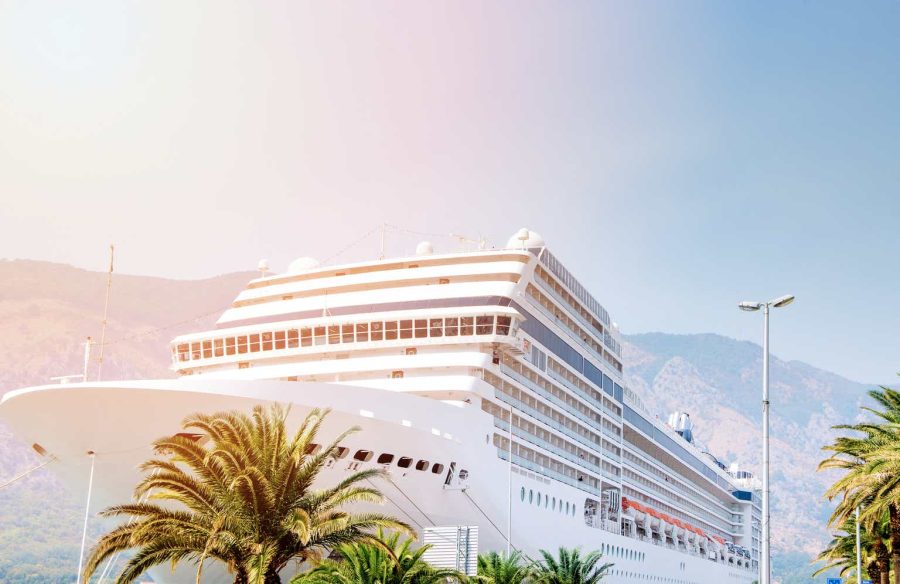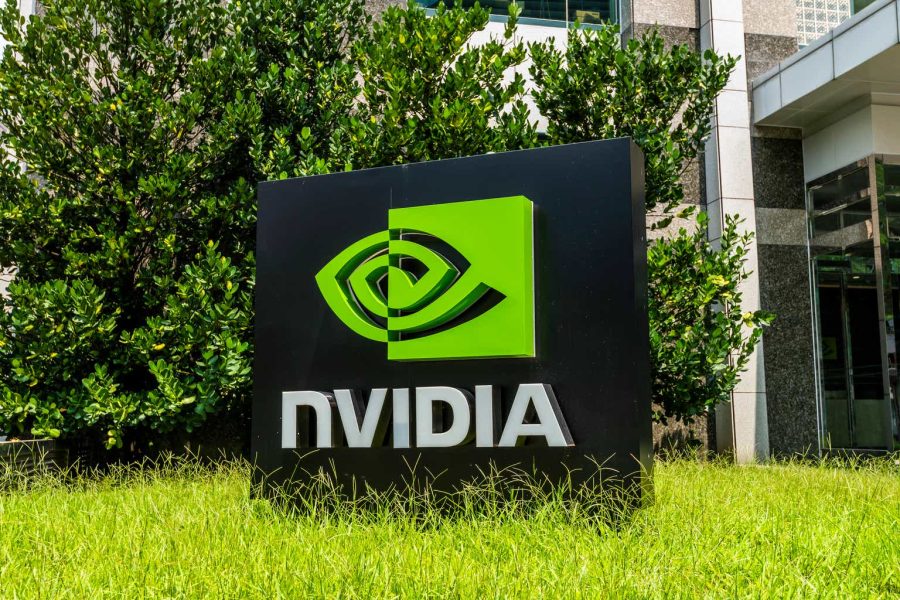July 14, 2024 This Week Top S&P 500 Gainers & Losers
Tesla: Time To Take Profits
Microsoft: The Q4 Results Should Surprise You
Tesla: Optimus And FSD Probably Won’t Save The Day
April 23, 2024 Maximizing Profits: When is the Right Time to Sell Your Business?
April 12, 2024 Improve Your Financial Status: A How-To Guide
April 12, 2024 How ZIM Integrated Container Tracking is Revolutionizing Global Trade
March 15, 2024 6 Best Growth Stocks To Buy Now According to Metatrader 5

Norwegian Cruise Line (NCLH) Stock Forecast for 2024–2028. Sell or Buy?
Updated: July 26, 2024 (22:06)
Sector: Consumer cyclicalThe share price of Norwegian Cruise Line Holdings Ltd. (NCLH) now
50/200 Day Moving Average: $17.73 / $17.42
This figure corresponds to the Average Price over the previous 50/200 days. For Norwegian Cruise Line stocks, the 50-day moving average is the support level today.
For Norwegian Cruise Line stocks, the 200-day moving average is the support level today.
Are you interested in Norwegian Cruise Line Holdings Ltd. stocks and want to buy them, or are they already in your portfolio? If yes, then on this page you will find useful information about the dynamics of the Norwegian Cruise Line stock price in 2024, 2025, 2026, 2027, 2028. How much will one Norwegian Cruise Line share be worth in 2024 - 2028?
When should I take profit in Norwegian Cruise Line stock? When should I record a loss on Norwegian Cruise Line stock? What are analysts' forecasts for Norwegian Cruise Line stock? What is the future of Norwegian Cruise Line stock? We forecast Norwegian Cruise Line stock performance using neural networks based on historical data on Norwegian Cruise Line stocks. Also, when forecasting, technical analysis tools are used, world geopolitical and news factors are taken into account.
Norwegian Cruise Line stock prediction results are shown below and presented in the form of graphs, tables and text information, divided into time intervals. (Next month, 2024, 2025, 2026, 2027 and 2028) The final quotes of the instrument at the close of the previous trading day are a signal to adjust the forecasts for Norwegian Cruise Line shares. This happens once a day.
Historical and forecast chart of Norwegian Cruise Line stock
The chart below shows the historical price of Norwegian Cruise Line stock and a prediction chart for the next month. For convenience, prices are divided by color. Forecast prices include: Optimistic Forecast, Pessimistic Forecast, and Weighted Average Best Forecast. Detailed values for the Norwegian Cruise Line stock price can be found in the table below.
Long-term forecasts by years.

Navigating the Waves of NCLH Stock: A Forecast of Opportunities

For potential investors and stock analysts, the Norwegian Cruise Line Holdings (NCLH) presents an intriguing investment opportunity that demands careful analysis. Key events and factors poised to sway the NCLH stock rates in the near future encompass a duo of pivotal dynamics: unparalleled pricing strength combined with robust EBITDA growth, alongside strategic debt reduction accompanied by record-breaking booking trends. These components collectively craft a promising landscape for NCLH's financial voyage.
Unlocking Predictive Insights on NCLH Stock Movements
An adept analyst, focusing on the forecast of Norwegian Cruise Line's stock, will likely weigh these factors significantly. The pricing power and EBITDA expansion symbolize the company's robust revenue-generating capability, accelerated by an uptick in demand signaling strong consumer confidence in ocean voyages. This is a shining testament to the allure of high seas adventure in the post-pandemic world, making NCLH a potentially lucrative stock to buy. Highlighting the impressive ticket pricing strength, this aspect alone can serve as a north star for predicting upward movements in NCLH stock prices.
Conversely, the concerted efforts to pare down debt mirror a prudent financial strategy that fortifies the company's balance sheet, enhancing its appeal to conservative investors. Coupled with the vigorous booking patterns, these trends not only underscore a recovering industry but also attest to the effectiveness of Norwegian Cruise Line's market strategies. By prioritizing financial health and customer demand, NCLH sets a course toward sustainable growth. Forecasting the company's stock prices, an analyst might view these factors through a lens of optimism, marking NCLH as a compelling buy or sell decision under current market conditions.
Ultimately, by analyzing these key drivers—pricing strength, EBITDA growth, debt reduction, and booking trends—an investment analyst can craft a nuanced NCLH stock price prediction. The interplay of these factors offers a compass by which to navigate the investing seas, making an educated NCLH stock forecast a treasure map leading to potential riches.
Review the original Analysis

Navigating the Ups and Downs: Predicting the Course of NCLH Stocks

Forecasting the future stock rates of Norwegian Cruise Line (NCLH) requires careful observation of pivotal factors poised to sway its market performance. Among the myriad influences, the recovery from the pandemic's blow to the travel sector emerges as a critical determinant. As the world gradually reopens, the resumption of travel and leisure activities heralds a significant turnaround for NCLH, albeit from a debilitated base. This recovery, however, is shadowed by the challenges shed by its past dilutive equity or debt issuances, rendering its financial position somewhat precarious.
An Analyst's Compass: Sailing Through Volatile Seas
To navigate the volatile waters of NCLH stock predictions, an analyst must don the hat of a seasoned sailor, using every tool at their disposal. Particularly, understanding NCLH's categorization as a tradeable stock—devoid of a strong economic moat and long-term compounding potential—highlights the necessity for a strategy centered around short to medium-term gains. This stance should be buttressed by an adept application of technical sentiment analysis, serving as a compass to discern potential entry and exit points. Such an approach not only mitigates risk but also capitalizes on the bullish outlook for the travel and leisure sector.
The confluence of recovering prospects, technical sentiment, and strategic risk management forms the triad upon which analysts can base their most accurate NCLH stock price predictions. Whether pondering over NCLH stock buy or sell decisions, setting an NCLH stock price target, or gauging the stock’s potential as a good buy, these guiding lights offer the clarity needed in a sea of uncertainty. As we look towards the future, the intricate dance of analyzing factors such as technical indicators and sector recovery will remain indispensable in forecasting the course of NCLH stocks.
- Recovery prospects from a weakened base
- Technical sentiment and risk assessment
- Categorization as a tradeable stock


Riding the Waves: How Norwegian Cruise Line's Prosperity Shapes Stock Forecasts

Analysts poring over the Norwegian Cruise Line Holdings' (NCLH) future have identified key events and factors likely to steer the course of NCLH stock rates in the near term. At the heart of bullish forecasts is the company's promising net yields growth. Improved guidance for FY24 suggests an uptick in passenger ticket pricing and onboard spending, signaling robust financial health and profitability on the horizon. This pivotal insight into NCLH's operations is expected to positively reverberate through the value of its stocks, making 'NCLH stock price prediction' a hot topic among investors.
Charting the Course for NCLH's Stock Predictions
Moreover, with Norwegian's laser focus on growth initiatives, including the addition of new, luxurious ships and exclusive private islands, the company sails towards uncharted territories of revenue, targeting the high-net-worth segment. Such strategic expansions are pivotal for forecasters, enriching their arsenal for crafting accurate 'NCLH stock forecasts'. Paired with the surge in industry demand, marking 2024 with record bookings, the cruise line is poised to outpace its counterparts.
However, not all is smooth sailing. The weight of Norwegian's debt casts a shadow over its luminous outlook, posing a challenge during possible economic downturns. Yet, with management's committed efforts towards debt reduction and improving financial flexibility, NCLH emerges as a resilient contender in the stock market. Analysts mindful of these nuances, evaluating both opportunities and risks, are better equipped to navigate the volatile seas of stock investment, leading to more grounded 'NCLH stock buy or sell' decisions.
In summary, as we delve into Norwegian Cruise Line's stock forecast, a panoramic view of net yields growth, strategic growth initiatives, and industry dynamics, balanced with the understanding of capital structure risks, provides a comprehensive framework. Such a holistic approach empowers analysts and investors alike to make informed "buy or sell Norwegian Cruise Line stock" decisions, pointing towards a promising journey ahead for NCLH stock rates.
Review the original Analysis
NCLH is the ticker or stock symbol for Norwegian Cruise Line Holdings Ltd .. You can buy or sell shares in Norwegian Cruise Line Holdings Ltd. on the NASDAQ stock exchange. Norwegian Cruise Line Holdings Ltd. based in the United States. Shares of NCLH Norwegian Cruise Line Holdings Ltd. traded in dollars.
Norwegian Cruise Line daily forecast for a month
| Date | Target | Pes. | Opt. | Vol., % |
|---|---|---|---|---|
| Jul 28 | 19.40 | 19.07 | 19.75 | 3.58 |
| Jul 29 | 19.26 | 19.01 | 19.85 | 4.46 |
| Jul 30 | 18.80 | 18.27 | 19.15 | 4.82 |
| Jul 31 | 18.98 | 18.64 | 19.56 | 4.97 |
| Aug 01 | 18.76 | 18.29 | 19.16 | 4.80 |
| Aug 02 | 18.68 | 18.19 | 19.15 | 5.30 |
| Aug 03 | 18.33 | 17.91 | 18.52 | 3.40 |
| Aug 04 | 18.28 | 18.11 | 18.77 | 3.63 |
| Aug 05 | 18.24 | 17.97 | 18.56 | 3.25 |
| Aug 06 | 17.54 | 17.04 | 17.71 | 3.91 |
| Aug 07 | 17.24 | 16.89 | 17.59 | 4.17 |
| Aug 08 | 17.76 | 17.32 | 17.91 | 3.40 |
| Aug 09 | 17.57 | 17.18 | 17.84 | 3.85 |
| Aug 10 | 18.00 | 17.73 | 18.33 | 3.37 |
| Aug 11 | 18.15 | 17.65 | 18.43 | 4.40 |
| Aug 12 | 18.63 | 18.46 | 19.11 | 3.51 |
| Aug 13 | 18.40 | 18.17 | 18.70 | 2.92 |
| Aug 14 | 18.72 | 18.30 | 19.26 | 5.24 |
| Aug 15 | 19.05 | 18.75 | 19.22 | 2.52 |
| Aug 16 | 19.43 | 19.25 | 19.79 | 2.79 |
| Aug 17 | 19.78 | 19.34 | 20.40 | 5.44 |
| Aug 18 | 19.93 | 19.33 | 20.40 | 5.53 |
| Aug 19 | 20.16 | 19.68 | 20.76 | 5.49 |
| Aug 20 | 19.99 | 19.81 | 20.25 | 2.22 |
| Aug 21 | 20.64 | 20.29 | 21.05 | 3.74 |
| Aug 22 | 21.04 | 20.63 | 21.26 | 3.06 |
| Aug 23 | 20.77 | 20.51 | 20.98 | 2.31 |
| Aug 24 | 20.44 | 19.80 | 21.08 | 6.44 |
| Aug 25 | 20.66 | 20.23 | 20.92 | 3.43 |
| Aug 26 | 20.14 | 19.79 | 20.48 | 3.50 |
Norwegian Cruise Line Daily Price Targets
Norwegian Cruise Line Stock Forecast 07-28-2024.
Forecast target price for 07-28-2024: $19.40.
Positive dynamics for Norwegian Cruise Line shares will prevail with possible volatility of 3.458%.
Pessimistic target level: 19.07
Optimistic target level: 19.75
Norwegian Cruise Line Stock Forecast 07-29-2024.
Forecast target price for 07-29-2024: $19.26.
Negative dynamics for Norwegian Cruise Line shares will prevail with possible volatility of 4.268%.
Pessimistic target level: 19.01
Optimistic target level: 19.85
Norwegian Cruise Line Stock Forecast 07-30-2024.
Forecast target price for 07-30-2024: $18.80.
Negative dynamics for Norwegian Cruise Line shares will prevail with possible volatility of 4.594%.
Pessimistic target level: 18.27
Optimistic target level: 19.15
Norwegian Cruise Line Stock Forecast 07-31-2024.
Forecast target price for 07-31-2024: $18.98.
Positive dynamics for Norwegian Cruise Line shares will prevail with possible volatility of 4.734%.
Pessimistic target level: 18.64
Optimistic target level: 19.56
Norwegian Cruise Line Stock Forecast 08-01-2024.
Forecast target price for 08-01-2024: $18.76.
Negative dynamics for Norwegian Cruise Line shares will prevail with possible volatility of 4.581%.
Pessimistic target level: 18.29
Optimistic target level: 19.16
Norwegian Cruise Line Stock Forecast 08-02-2024.
Forecast target price for 08-02-2024: $18.68.
Negative dynamics for Norwegian Cruise Line shares will prevail with possible volatility of 5.031%.
Pessimistic target level: 18.19
Optimistic target level: 19.15
NCLH (NCLH) Monthly Stock Prediction for 2024
| Month | Target | Pes. | Opt. | Vol., % |
|---|---|---|---|---|
| Aug. | 20.90 | 20.04 | 21.40 | 6.35 |
| Sep. | 22.74 | 22.14 | 23.94 | 7.50 |
| Oct. | 22.99 | 22.41 | 24.76 | 9.47 |
| Nov. | 21.86 | 20.79 | 22.62 | 8.12 |
| Dec. | 22.32 | 21.83 | 22.77 | 4.12 |
Norwegian Cruise Line forecast for this year
Norwegian Cruise Line Stock Prediction for Aug 2024
An uptrend is forecast for this month with an optimal target price of $20.8971. Pessimistic: $20.04. Optimistic: $21.40
Norwegian Cruise Line Stock Prediction for Sep 2024
An uptrend is forecast for this month with an optimal target price of $22.736. Pessimistic: $22.14. Optimistic: $23.94
Norwegian Cruise Line Stock Prediction for Oct 2024
An uptrend is forecast for this month with an optimal target price of $22.9861. Pessimistic: $22.41. Optimistic: $24.76
Norwegian Cruise Line Stock Prediction for Nov 2024
An downtrend is forecast for this month with an optimal target price of $21.8598. Pessimistic: $20.79. Optimistic: $22.62
Norwegian Cruise Line Stock Prediction for Dec 2024
An uptrend is forecast for this month with an optimal target price of $22.3189. Pessimistic: $21.83. Optimistic: $22.77
Norwegian Cruise Line (NCLH) Monthly Stock Prediction for 2025
| Month | Target | Pes. | Opt. | Vol., % |
|---|---|---|---|---|
| Jan | 21.81 | 20.93 | 23.00 | 9.00 |
| Feb | 21.65 | 20.33 | 23.19 | 12.32 |
| Mar | 20.70 | 19.96 | 21.11 | 5.49 |
| Apr | 19.93 | 19.36 | 21.29 | 9.08 |
| May | 20.53 | 19.03 | 21.72 | 12.38 |
| Jun | 19.92 | 18.68 | 21.11 | 11.51 |
| Jul | 18.52 | 18.00 | 19.74 | 8.82 |
| Aug | 17.69 | 17.26 | 18.08 | 4.50 |
| Sep | 18.40 | 17.79 | 19.15 | 7.11 |
| Oct | 19.46 | 17.98 | 20.34 | 11.58 |
| Nov | 19.21 | 17.69 | 19.96 | 11.36 |
| Dec | 20.36 | 19.16 | 21.24 | 9.78 |
Norwegian Cruise Line (NCLH) Monthly Stock Prediction for 2026
| Month | Target | Pes. | Opt. | Vol., % |
|---|---|---|---|---|
| Jan | 19.43 | 17.99 | 19.99 | 10.01 |
| Feb | 20.20 | 18.71 | 21.42 | 12.64 |
| Mar | 19.35 | 17.81 | 20.79 | 14.34 |
| Apr | 18.29 | 17.56 | 18.78 | 6.52 |
| May | 17.39 | 16.56 | 18.42 | 10.10 |
| Jun | 17.41 | 17.05 | 18.21 | 6.41 |
| Jul | 16.84 | 15.91 | 17.54 | 9.31 |
| Aug | 18.10 | 16.71 | 18.61 | 10.21 |
| Sep | 19.31 | 18.46 | 20.39 | 9.47 |
| Oct | 19.00 | 17.50 | 20.39 | 14.17 |
| Nov | 18.74 | 17.58 | 20.14 | 12.74 |
| Dec | 19.07 | 17.68 | 20.52 | 13.85 |
Norwegian Cruise Line (NCLH) Monthly Stock Prediction for 2027
| Month | Target | Pes. | Opt. | Vol., % |
|---|---|---|---|---|
| Jan | 17.83 | 16.84 | 19.21 | 12.35 |
| Feb | 18.16 | 16.85 | 19.55 | 13.83 |
| Mar | 18.63 | 17.68 | 19.04 | 7.14 |
| Apr | 19.69 | 19.24 | 20.85 | 7.74 |
| May | 21.03 | 19.37 | 22.21 | 12.78 |
| Jun | 22.54 | 21.89 | 24.01 | 8.83 |
| Jul | 24.39 | 23.81 | 25.90 | 8.10 |
| Aug | 25.10 | 24.52 | 25.73 | 4.68 |
| Sep | 25.27 | 24.41 | 26.31 | 7.20 |
| Oct | 25.07 | 23.52 | 25.80 | 8.84 |
| Nov | 24.82 | 23.23 | 25.76 | 9.83 |
| Dec | 23.88 | 22.35 | 25.62 | 12.77 |
Norwegian Cruise Line (NCLH) Monthly Stock Prediction for 2028
| Month | Target | Pes. | Opt. | Vol., % |
|---|---|---|---|---|
| Jan | 22.73 | 22.07 | 24.03 | 8.14 |
| Feb | 23.30 | 21.60 | 24.63 | 12.30 |
| Mar | 22.83 | 21.37 | 24.27 | 11.95 |
| Apr | 23.15 | 21.67 | 24.61 | 11.95 |
| May | 23.11 | 22.39 | 23.82 | 6.01 |
| Jun | 23.89 | 23.08 | 25.76 | 10.39 |
| Jul | 23.06 | 21.53 | 24.62 | 12.55 |
| Aug | 22.53 | 20.99 | 23.09 | 9.07 |
| Sep | 24.62 | 22.80 | 25.58 | 10.88 |
| Oct | 23.56 | 21.87 | 24.58 | 11.03 |
| Nov | 23.59 | 21.89 | 24.18 | 9.46 |
| Dec | 24.58 | 22.68 | 26.27 | 13.66 |
Norwegian Cruise Line information and performance
7665 CORPORATE DRIVE, MIAMI, FL, US
Market capitalization of the Norwegian Cruise Line Holdings Ltd. is the total market value of all issued shares of a company. It is calculated by the formula multiplying the number of NCLH shares in the company outstanding by the market price of one share.
EBITDA of Norwegian Cruise Line is earnings before interest, income tax and depreciation of assets.
P/E ratio (price to earnings) - shows the ratio between the price of a share and the company's profit
Price/earnings to growth
Dividend Per Share is a financial indicator equal to the ratio of the company's net profit available for distribution to the annual average of ordinary shares.
Dividend yield is a ratio that shows how much a company pays in dividends each year at the stock price.
EPS shows how much of the net profit is accounted for by the common share.
Trailing P/E depends on what has already been done. It uses the current share price and divides it by the total earnings per share for the last 12 months.
Forward P/E uses projections of future earnings instead of final numbers.
Enterprise Value (EV) /Revenue
The EV / EBITDA ratio shows the ratio of the cost (EV) to its profit before tax, interest and amortization (EBITDA).
Number of issued ordinary shares
Number of freely tradable shares
Shares Short Prior Month - the number of shares in short positions in the last month.


















































